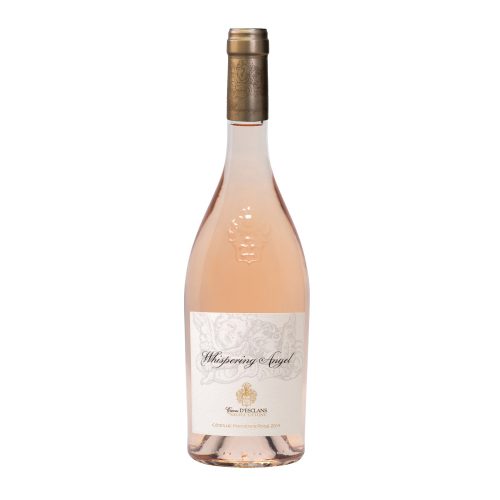
On the 17th floor of Eugene’s creakiest high-rise, behind the pebbled-glass door marked “Wine Investigations,” my pal and partner, Mole, set out a display of polished glasses and opened bottles of pink-ish wines.
If it’s summer — it is — and we’re gonna get hot — and we surely have been — we’re gonna want some cool wines. Time, then, for our annual rosie column.
No easy task, this. When we launched this tradition a decade or so ago, there were fewer than a dozen good rosés on market shelves. The rest were mostly syrupy-sweet pinks — aka “blushes” — very popular “white” zinfandels, often bought by the gallon.
Now, rosés have surged in consumer affections; even “blushes” have improved (mostly). A good wine shop might offer over 50 rosies, some sparkling, some not. We all benefit, but choosing among them can be onerous. For this column, Mole selected just some of our faves: “S’all I could do, Sleut’” — he calls me Sleuth, an honor coming from the master of stealth. We went to work.
Before we list our choices, we have to note that there are two kinds of rosé. First, the “saignée,” French term for “bleeds,” wines drawn off first-run juice of “big” reds whose flavors winemakers want to concentrate; saignée rosés can be very good, but “intentional” rosés tend to be better.
Second, the standards for rosés are still set in the south of France, in Provence, where rosés garner deep respect. Top-shelf rosés come from Chateau d’Esclans; their best, called Garrus, can fetch $100 a bottle; rich folk, they brag, load cases of Garrus onto their yachts and drink it year-round. OK. They also sell loads of d’Esclans Whispering Angel ($30), a blend of grenache and rolle (aka Vermentino).
Almost all fine rosés from Provence tend to be very pale in color (pressed juice is given little time in contact with grape skins, hence little color). No yacht? Try Pere Anselme 2016 Cotes de Provence ($14.50), or Miradou 2016 Cotes de Provence ($12.50), both very pale, lovely rosé, red berry flavors, zippy acidity. Like all good rosés, these are versatile, ready for a wide variety of foods cooked outdoors, on grills and such.
Local winemakers have enjoyed success with rosés made from our pinot grapes, gris and noir. Among the best, Territorial 2016 Rosé of Pinot Gris ($15) offers pale color and near-perfect balance of fruit flavors and food-friendly acid. Mark Nicholl’s William Rose 2016 Prohibition Rose is made from 85 percent pinot gris with 15 percent pinot noir and is terrific — red fruit flavors, good acidity, spicy, excellent with food.
Many Oregon brands seem to be experimenting with rosés of pinot noir — carving, as Mole says, “a piece of da rosie pie” — and are discovering that, like other pinot noirs, rosés made from those grapes can develop greater depth of flavor and character over time (a year or so) in the bottle. For example, King Estate just produced 2016 Estate Rosé of Pinot Noir (NA) their first rosé from estate (Mountain Blocks) grapes; it could be called a light red, it has so much color, and, like many young pinot noirs, it delivers deep flavors of cherries and raspberries, but is still rather awkward. We predict that in a year it’ll be dynamic and delish. Meanwhile, their KE 2016 Acrobat Rosé of Pinot Noir ($15), a saignée, is brightly charming.
“D’ere’s lots moah, Sleut’,” Mole pleads.
“Understood, pal,” I respond, “but we’re outta time and space. Got just enough to wish readers a super summer.”
A Note From the Publisher

Dear Readers,
The last two years have been some of the hardest in Eugene Weekly’s 43 years. There were moments when keeping the paper alive felt uncertain. And yet, here we are — still publishing, still investigating, still showing up every week.
That’s because of you!
Not just because of financial support (though that matters enormously), but because of the emails, notes, conversations, encouragement and ideas you shared along the way. You reminded us why this paper exists and who it’s for.
Listening to readers has always been at the heart of Eugene Weekly. This year, that meant launching our popular weekly Activist Alert column, after many of you told us there was no single, reliable place to find information about rallies, meetings and ways to get involved. You asked. We responded.
We’ve also continued to deepen the coverage that sets Eugene Weekly apart, including our in-depth reporting on local real estate development through Bricks & Mortar — digging into what’s being built, who’s behind it and how those decisions shape our community.
And, of course, we’ve continued to bring you the stories and features many of you depend on: investigations and local government reporting, arts and culture coverage, sudoku and crossword puzzles, Savage Love, and our extensive community events calendar. We feature award-winning stories by University of Oregon student reporters getting real world journalism experience. All free. In print and online.
None of this happens by accident. It happens because readers step up and say: this matters.
As we head into a new year, please consider supporting Eugene Weekly if you’re able. Every dollar helps keep us digging, questioning, celebrating — and yes, occasionally annoying exactly the right people. We consider that a public service.
Thank you for standing with us!

Publisher
Eugene Weekly
P.S. If you’d like to talk about supporting EW, I’d love to hear from you!
jody@eugeneweekly.com
(541) 484-0519